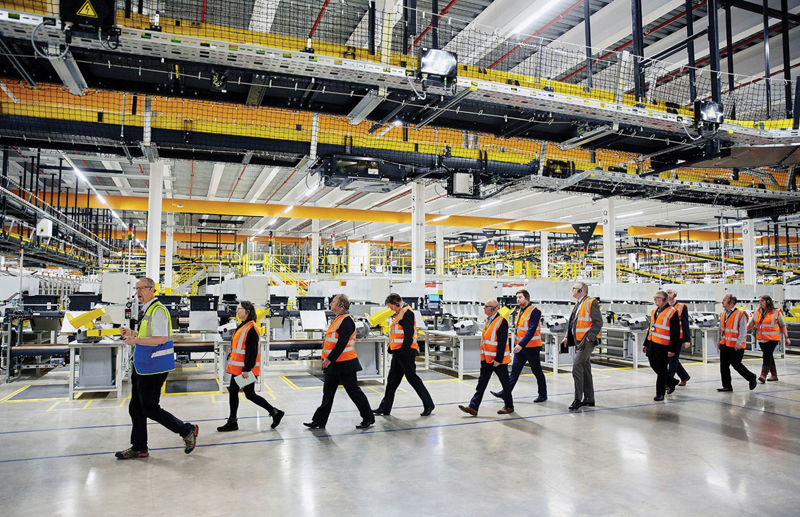Within today's international marketplace, the need for quick and efficient international transportation has not been greater. Consumers expect fast shipping choices, and businesses are continually seeking ways to satisfy these expectations while keeping expenses affordable. One approach that has gained significant traction in the last years is the use of fulfillment centres. These facilities function as strategic centres where stock is stored, processed, and shipped, radically changing the delivery landscape for companies involved in cross-border trade.
Fulfilment centres streamline the international shipping procedure, allowing businesses to deliver their products more effectively across different regions. By strategically locating these centres in important strategic areas, companies can lower shipping durations and expenses, ultimately improving customer satisfaction. The inclusion of tech within fulfilment centres also facilitates immediate stock management and monitoring, guaranteeing that companies can respond quickly to customer demands and optimize their supply chains. As we delve deeper into the effects of fulfilment centres on global shipping, it is clear that they are not just a passing fad but a critical part of contemporary logistics.
Comprehending Fulfilment Centres

Fulfillment centers represent customized warehouses developed to enhance the storing, packaging, and delivery of products for businesses, especially those active in online commerce. These facilities allow companies to handle their stock more effectively, making sure that products are readily available for rapid shipment. By consolidating distribution operations, fulfilment centers eliminate the complexities linked with international shipping, allowing companies to focus on their primary activities while enhancing client satisfaction.
The functional model of a fulfillment center permits for the integration of tech and process enhancement. Personnel at these centers manage all aspects from accepting and keeping goods to packing and delivering them directly to customers. Advanced stock control solutions track stock levels in actual time, guaranteeing that companies can rapidly react to demand fluctuations and reduce the chance of inventory shortages. This streamlined approach lowers shipping times and improves the general delivery service for global customers.
Moreover, fulfilment centre s often have international networks that facilitate global transport. By strategically placing these centers nearer to target audiences, businesses can cut transport expenses and travel times significantly. This not only boosts efficiencies but also enables businesses to provide attractive delivery prices to their customers. In this way, fulfilment centers serve a essential role in the progress of international online commerce operations, changing supply chain into a strategic benefit.
Advantages of Distribution Centres in Worldwide Delivery
Fulfilment centres play a critical role in enhancing the effectiveness of global delivery by centralizing inventory in proximity to key markets. This tactical positioning allows businesses to decrease shipping times significantly, which is crucial in the modern accelerated consumer environment. With goods kept at diverse locations worldwide, companies can fulfill orders rapidly and react to market demands avoiding the inefficiency of shipping products across borders from a sole site.
Additionally, logistics hubs ease the difficulties of customs procedures and local rules. By utilizing regional knowledge, these centres can handle the nuances of international shipping more efficiently, minimizing the risk of holdups and ensuring adherence with diverse jurisdictional requirements. This not only simplifies operations but also instills assurance in buyers, knowing their orders will arrive on time and in alignment with local expectations.
Cost efficiency is another significant advantage offered by fulfilment centres in cross-border logistics. By consolidating logistics and inventory management, companies can attain financial efficiencies that lead to decreased operational costs. This leads to more affordable shipping prices and, ultimately, more competitive pricing for consumers. The ability to efficiently manage product returns and exchanges through these centres also enhances customer satisfaction, creating a smooth purchase journey that promotes brand loyalty and repeat business.
Future Trends in Fulfilling and Shipping
As e-commerce continues to develop, the role of distribution centres is changing. With progress in tech, automated systems is set to dramatically change the operations inside these centres. Innovations such as robotic picking systems and artificial intelligence-based inventory management are enhancing efficiency, allowing for faster processing times and reducing errors. This shift not only accelerates operations but also provides greater accuracy in order processing, benefiting companies and customers alike.
Environmental responsibility is becoming a vital factor for shoppers, and distribution centres are adapting to meet these expectations. Eco-friendly practices, such as energy-efficient warehousing and eco-friendly packaging, are becoming popular. Businesses are increasingly focusing on reducing their carbon footprint during fulfilment and shipping processes. This commitment to eco-conscious responsible operations is likely to affect consumer purchasing decisions significantly, pushing companies to incorporate sustainable strategies in their logistics.
Furthermore, the growth of cross-border e-commerce is driving shifts in fulfilment strategies. As more businesses reach international markets, logistics hubs will play a essential role in managing customs regulations and optimizing shipping routes. Strategic positioning of logistics hubs in important global locations can enhance shipping speed and cut costs, making it easier for businesses to provide seamless global service. As this trend continues, distribution centres will become crucial partners in the international shipping landscape.
